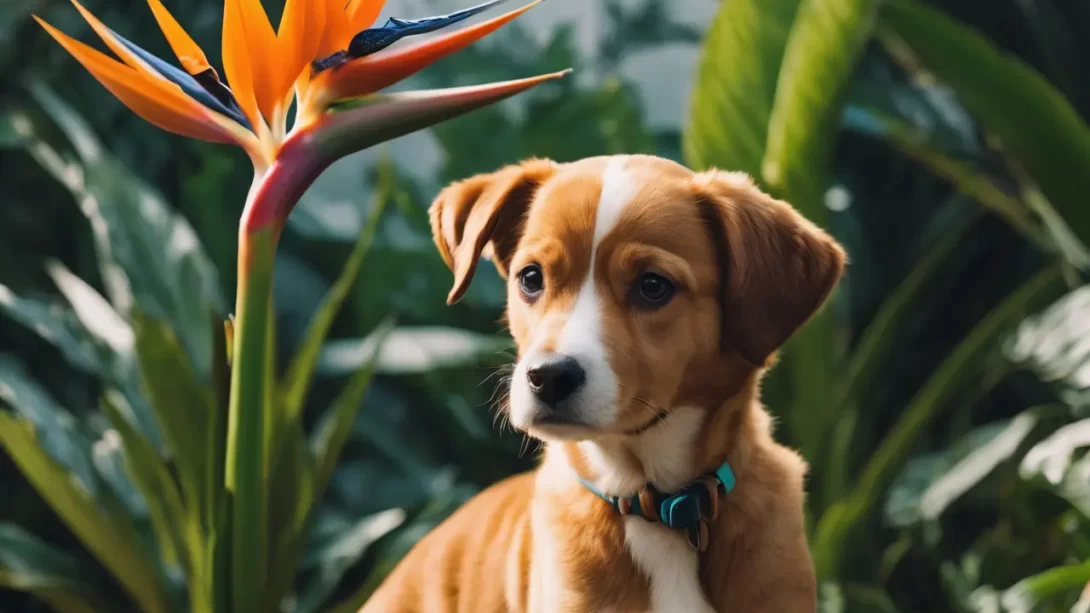The Bird of Paradise, known scientifically as Strelitzia reginae, is a striking and popular ornamental plant, cherished for its vibrant, exotic flowers resembling a bird in flight. However, for dog owners, there’s a critical question to consider: is this beautiful plant safe for their canine companions? This article delves into the toxicity of the Bird of Paradise plant in relation to dogs, aiming to provide pet owners with essential information for ensuring the safety of their furry friends.
Bird of Paradise Plant
The Bird of Paradise is native to South Africa and is renowned for its unique, brightly colored flowers and lush, tropical foliage. These plants are commonly found in gardens and as indoor plants in various parts of the world. They thrive in warm climates and require minimal maintenance, making them a popular choice among gardeners and plant enthusiasts. However, their widespread presence raises concerns about their safety around pets, especially dogs, who may be inclined to chew on plants.
Toxicity Profile of Bird of Paradise
The Bird of Paradise plant contains certain compounds that are toxic to dogs. These include hydrocyanic acid and tannins, which are primarily found in the fruit and seeds but can also be present in other parts of the plant. While the toxicity level is generally considered to be mild to moderate, ingestion can still pose health risks to dogs. It’s crucial for dog owners to understand these risks to prevent potential poisoning and to ensure the well-being of their pets.
Symptoms of Poisoning in Dogs
If a dog ingests parts of the Bird of Paradise plant, several symptoms can manifest, indicating possible poisoning. Common signs to watch for include nausea, vomiting, and diarrhea. In some cases, dogs may show signs of drowsiness or weakness. More severe symptoms might include difficulty in breathing or an abnormal heart rate, although these are less common. It’s important for dog owners to be aware of these symptoms, as early detection can be crucial for effective treatment.
First Aid and Treatment
In the event that a dog ingests Bird of Paradise, certain first aid measures can be taken. Firstly, remove any plant material from the dog’s mouth and provide them with fresh water. It’s important not to induce vomiting unless specifically instructed by a veterinarian. If symptoms are observed, contact a veterinarian immediately. The treatment will depend on the symptoms and the amount of plant ingested. Veterinarians may administer medications to alleviate symptoms, and in more severe cases, supportive care like IV fluids may be necessary.
Prevention and Safety Measures
Preventing exposure is key to protecting dogs from the potential toxicity of the Bird of Paradise plant. If you have this plant in your garden or home, ensure it is out of reach of your dog. Regularly check for fallen leaves or flowers, which could be ingested by curious pets. For those considering adding new plants to their environment, it may be wise to choose pet-safe alternatives. Being proactive and vigilant can help maintain a safe and enjoyable living space for both your pets and your plants.
Alternative Pet-Safe Plants
For pet owners looking to decorate their homes or gardens without the worry of toxicity, there are numerous pet-safe plant options. Some popular non-toxic alternatives include Spider Plant (Chlorophytum comosum), Boston Fern (Nephrolepis exaltata), and Areca Palm (Dypsis lutescens). These plants not only add aesthetic value to your home but also ensure a safe environment for your dogs. Researching and selecting pet-friendly plants can be a rewarding way to enjoy greenery without compromising the health of your pets.
Conclusion
The Bird of Paradise is an undeniably attractive plant, but its mild to moderate toxicity to dogs makes it a concerning choice for pet owners. Recognizing the symptoms of poisoning and knowing how to respond can be crucial for the well-being of your canine companion. Prevention, through cautious placement and choice of plants, remains the best strategy to protect pets from potential harm. By being informed and attentive, pet owners can create a beautiful, pet-friendly environment that is safe and enjoyable for all.



